Dead Space 3 Review
Dead Space 3 preserves most of the qualities of its predecessors while bringing more environmental variety, increased action and weapon crafting. It features a fully co-operative campaign, but this has an impact on the quality of the single player. The co-op brings interesting hallucinations during two player exclusive missions. The excellent weapon crafting fits logically into the universe and gives constant opportunity for self improvement. This sequel contains all the high stress action and Marker fuelled craziness you’ve come to expect from the franchise. It also continues the nightmare journey of the core protagonist: Isaac Clarke.
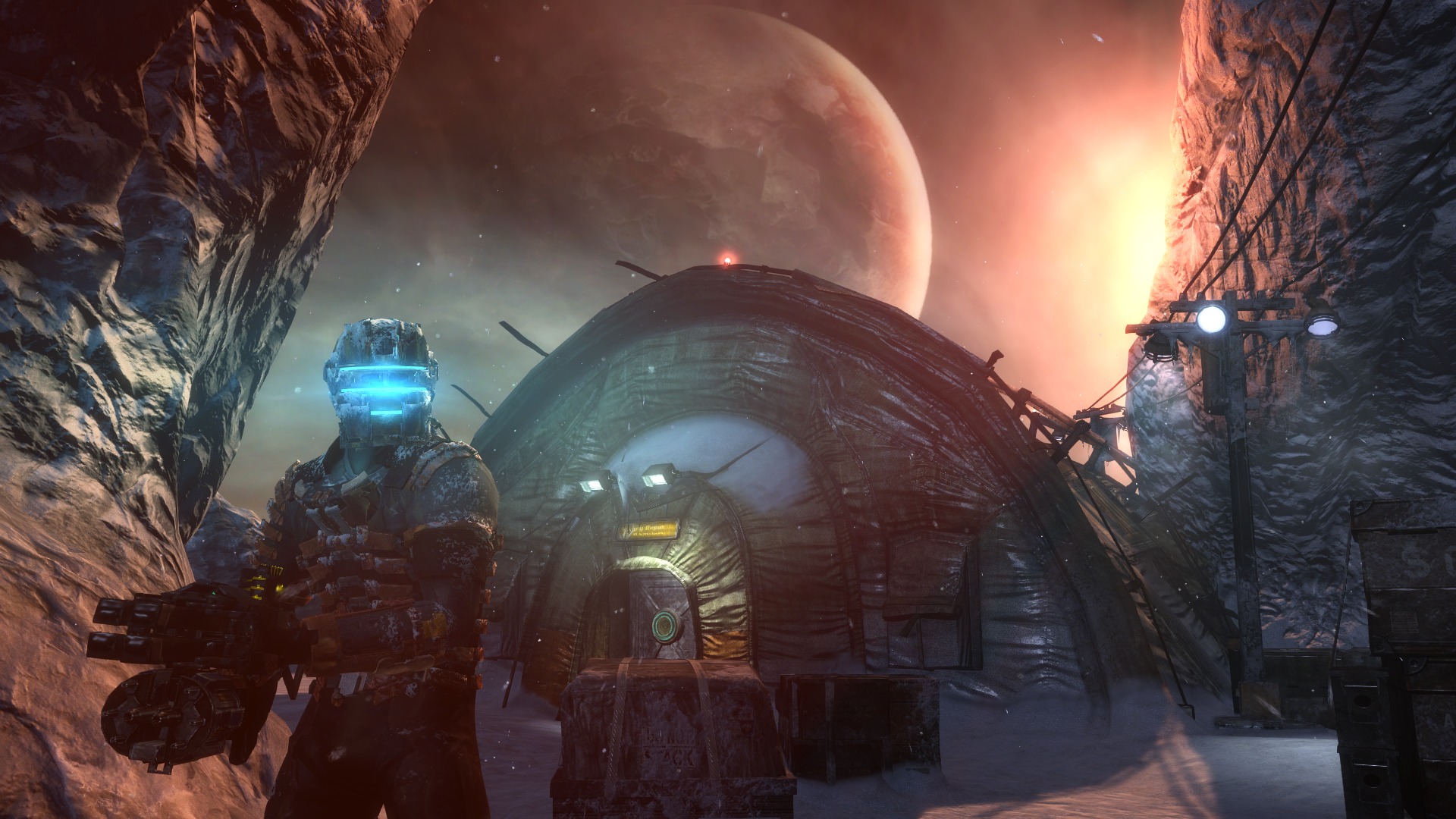
Nobody told Isaac that visor lights attract more attention
Isaac has been hiding on a lunar colony since we last saw him escape from the Sprawl with Ellie Langford in Dead Space 2. He has retreated from life and his relationship with Ellie has crumbled. Ellie has gone missing near an icy planet. She stumbled on something Marker related before communication was lost. EarthGov has come to Isaac for help in retrieving her. Fanatical Unitologists have followed EarthGov to Isaac’s location. Their charismatic leader, Jacob Danik, wants to kill Isaac but not before he unleashes a dormant marker on the colony. Their goal is convergence and the key has been buried in the snow for centuries. Isaac reluctantly agrees to go to an ice-covered planet so he can face his demons and save Ellie.
The story revolves around a 200 year old expedition to the frozen planet of Tau Volantis. There is a slow reveal of what happened during this expedition, and this begins with an excellent prologue. Unfortunately it never feels like a substantial world to dive into. There are more major characters in this third game, but they don’t spend much time on screen. Isaac’s relationship with Ellie is a frequent talking point. It’s disappointing that some of the relationship dialogue is uncomfortable due to poor timing, acting or writing. The writing for Jacob Danik, and all things Marker related, is great by comparison. The story is patchy at times but still interesting when it falls back on its strengths.
The narrative techniques have changed slightly. There are very few videos messages in this sequel. It prefers to progress the story with cut scenes, audio messages or text logs. Characters vanish through doors or elevators after cut scenes. You probably won’t be able to follow them due to locked doors or a broken ladder. In the rare situations where they are standing around, you won’t be able to interact with them. Video messages allowed for story without problems relating to personal space. John Carver is your co-op partner, but he behaves like a side character when you play alone. Carver’s actions isolate him from Isaac and the rest of the cast. He’ll pop up in cut scenes, after you’ve made your way to a remote location, and vanish again like a ghost.
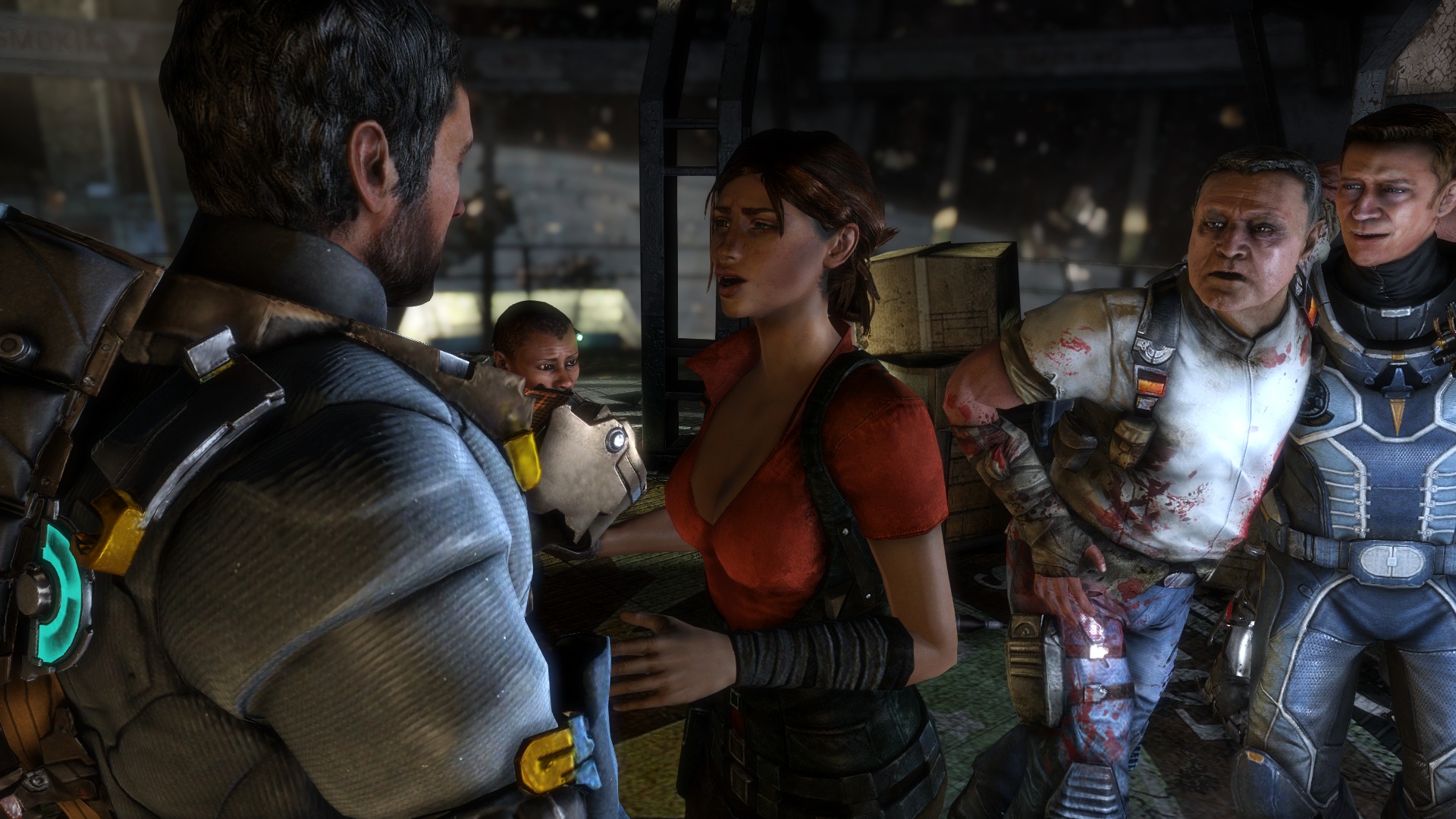
Some camera angles suggest Ellie received more than just a new eye
For solo players, co-op means noticeable references to two player scenarios. Save points are further apart than the previous games. Side missions do not have a single hard save. Quitting the game will force you to restart from much further back than you’ll expect. Another co-op problem is having characters reference the lonesome Isaac as part of a group. Electrical engineering stations have two terminals designed for a weak two player puzzle. Two rappelling stations are situated at the bottom of every cliff. There are even HUD messages that ask you to invite a co-op partner to play optional missions. Although they are managed fairly well, the intrusions can take you out of the solo experience.
Co-op changes the story slightly to account for the presence of a second player. Cut scenes still focus on Isaac’s journey, sometimes ignoring Carver all together. Carver and Isaac share brief cut scenes that are absent from single player. There is more dialogue during the quiet moments too; like when the pair arrives on Tau Volantis. The discussions and cut scenes might be about Isaac’s obsession with Ellie or Carver’s battle to maintain sanity. Carver will see things that Clarke doesn’t, although most of these are during the two player missions.
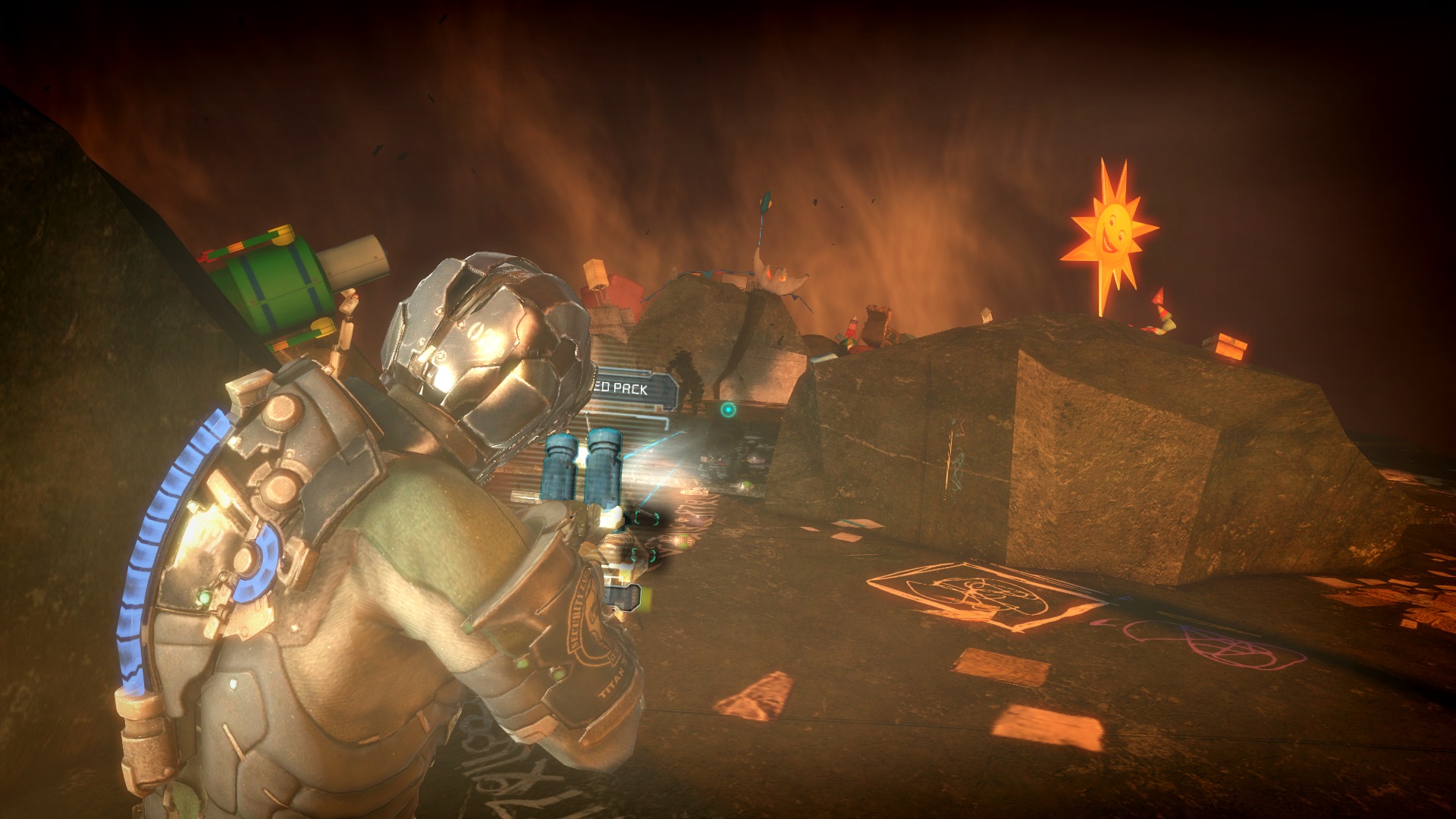
Carver’s hallucinations are pretty neat
Puzzles and sequences are modified when two players are present. The shuttle re-entry has one player steering while the other shoots mines. Solo puzzles now require two players to progress. One co-op mission has the pair searching through underground tunnels while Carver’s family history is revealed. Carver might battle his inner demons, produced by the Markers, while Isaac holds off waves of Necromorphs in the real world. These simple visual and audio changes are the best elements that co-op brings to the series.
Playing co-op is easy but not always smooth. Lengthy cut scenes cannot be skipped. You might need to wait minutes for a player to reach a checkpoint when joining a game in progress. If your partner disconnects during a side mission, you’ll be taken to the very beginning of that mission. On the upside, you can create a co-op game from the start of any chapter or side mission. Side missions have the most enemies and seem ideal for co-op play. Teamwork is usually limited to alternating stasis fields, covering your partner or reviving them. Story snippets, Carver’s hallucinations and co-op exclusive missions are good reasons to play the well crafted co-op.
Dead Space 3 features the most prominent environmental variety for the series. Much of the first half of the game occurs around the amazing derelict spaceships that have sat dormant for decades. You can freely explore the ships and the debris field surrounding them. This is perhaps the most liberating moment for the series. Never before have you had such freedom and time to explore in dangerously attractive locations. There are fleeting moments of being lost in the vastness of space. This is a perfect fit for the franchise and something that is only let down by its brevity.
The freezing world of Tau Volantis makes for a fine science fiction setting. It replaces the bulkheads of spaceships with ice caves and outposts. Threats are obscured by storms and Necromorphs hide under the snow. Enemies that charge have a distinct advantage in the blizzard like conditions. Unfortunately there isn’t any weather randomisation from one play through to the next. One of the best visual areas in the game is the icy science labs. These mix the spaceship like corridors with the exterior of the frozen planet quite well. The variety makes the chapters more memorable but there are consistency issues.
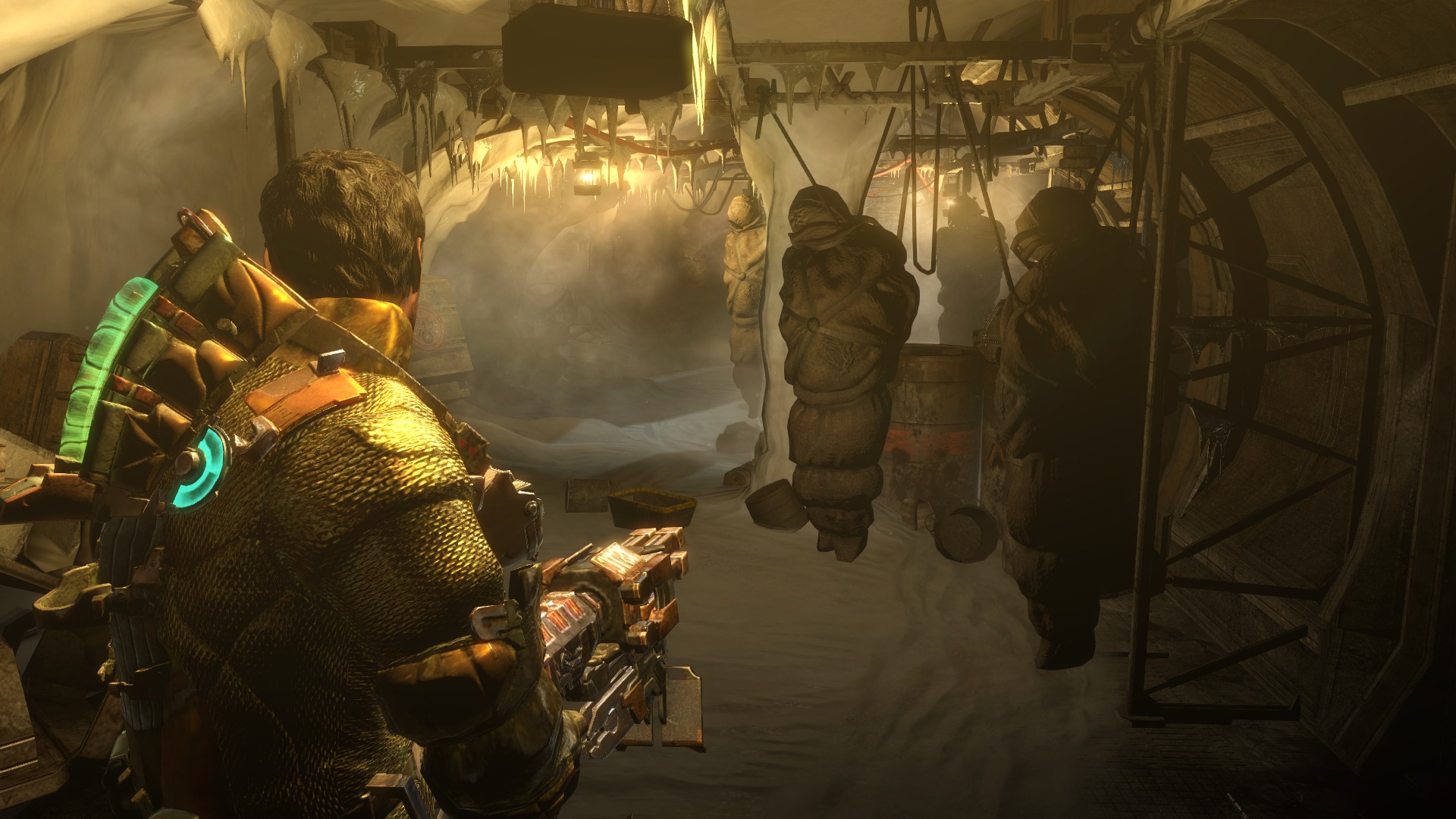
Necromorphs and snow, a chilling combination
There is a bit of backtracking to go along with all the environmental variety. Moving through the same areas a few times can seem a little unnecessary. Airlocks and elevators feel slower after you’ve been through them once already. Side missions reuse the same level geometry, so they also feel like backtracking. This wouldn’t be so bad if there was more freedom or incentive like those early chapters in space. Necromorph encounters and other quirky happenings are not quite enough to minimize the problems with backtracking.
Action in the third game is very intense from an early stage. Open areas may give you a brief opportunity to survey the surrounds before all hell breaks loose. There is limited chance to take up defensive positions in corners. Enemies will most likely flee if you back into a doorway. They might reappear through a vent behind you if you decide to retreat completely. Necromorphs move quickly if they still have all their limbs. A new enemy type practically teleports towards you, even when slowed by stasis. Since enemies spawn from vents all around you, it’s difficult to keep them at a distance.
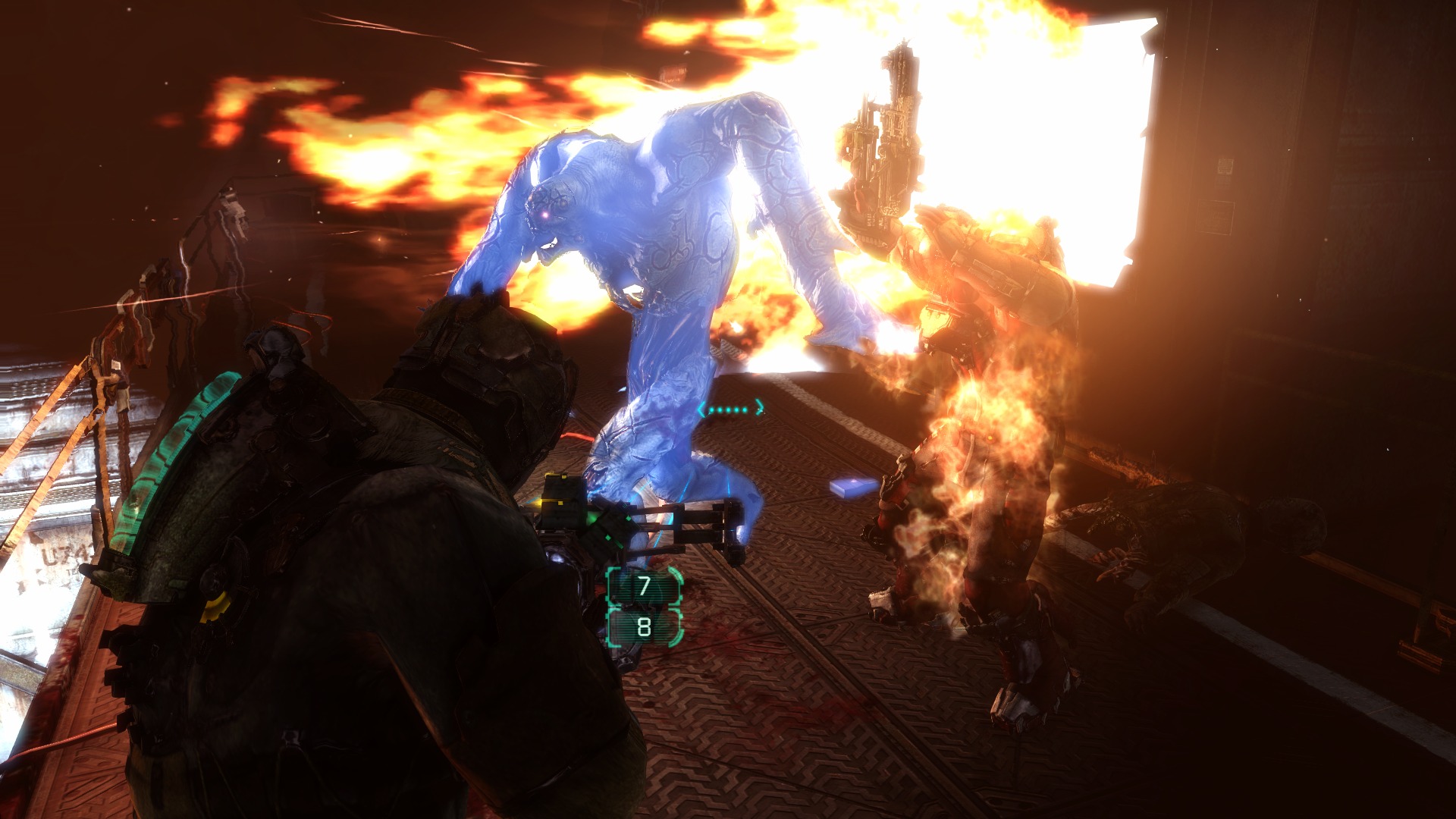
Mr Regenerating Necromorph, we meet again
Facing off against two regenerating Necromorphs is an example of how stressful the action can get. In some of the later chapters, the sheer number of enemies is unrelenting. Dozens of small enemies kept dropping down from the same overhead vent in one of the science labs. A slower pace, or at least smaller bursts of action, could have done wonders for the atmosphere in single player. It would also make the high intensity sections more memorable.
Human enemies feature notably in Dead Space 3. They feel foreign to the series despite Necromorphs being mutated humans. Isaac fights against human Unitologists that carry rifles and rocket launchers. Dismemberment is not required against humans and they are rarely a threat. Increased human encounters near the end take some sting from the game. Luckily the human encounters only make up around 5% of the total game action. The relative infrequency of human enemies prevents them from dominating in a negative way.
There are some moments where the game gives you time to breathe. You’ll be free to explore areas in zero gravity, keeping an eye on oxygen and rogue mines. The occasional kinetic puzzle also takes the focus from the action. Puzzles have been pushed to the background though, as there are barely a handful of easy puzzles scattered throughout. Some new puzzles, like the circuits, are bland time wasters. Rappelling up or down cliffs is often clumsy too. Isaac will stumble for no reason and aiming weapons can be harder than it should be. Despite moments of downtime, the tempo isn’t managed quite as well as the previous games.
A multi-part resource system replaces credits but doesn’t introduce depth. There are six resources, including scrap metal, somatic gel and transducers. Individual ammo has sadly vanished, replaced by universal ammo clips. The game dictates how much of each resource you receive based on difficulty. Small Scavenger bots collect resources when placed in specific locations. You find these locations with a visual indicator and a machine that goes ping. Scavenger bots feel like an afterthought even though they give a constant sense of progress.
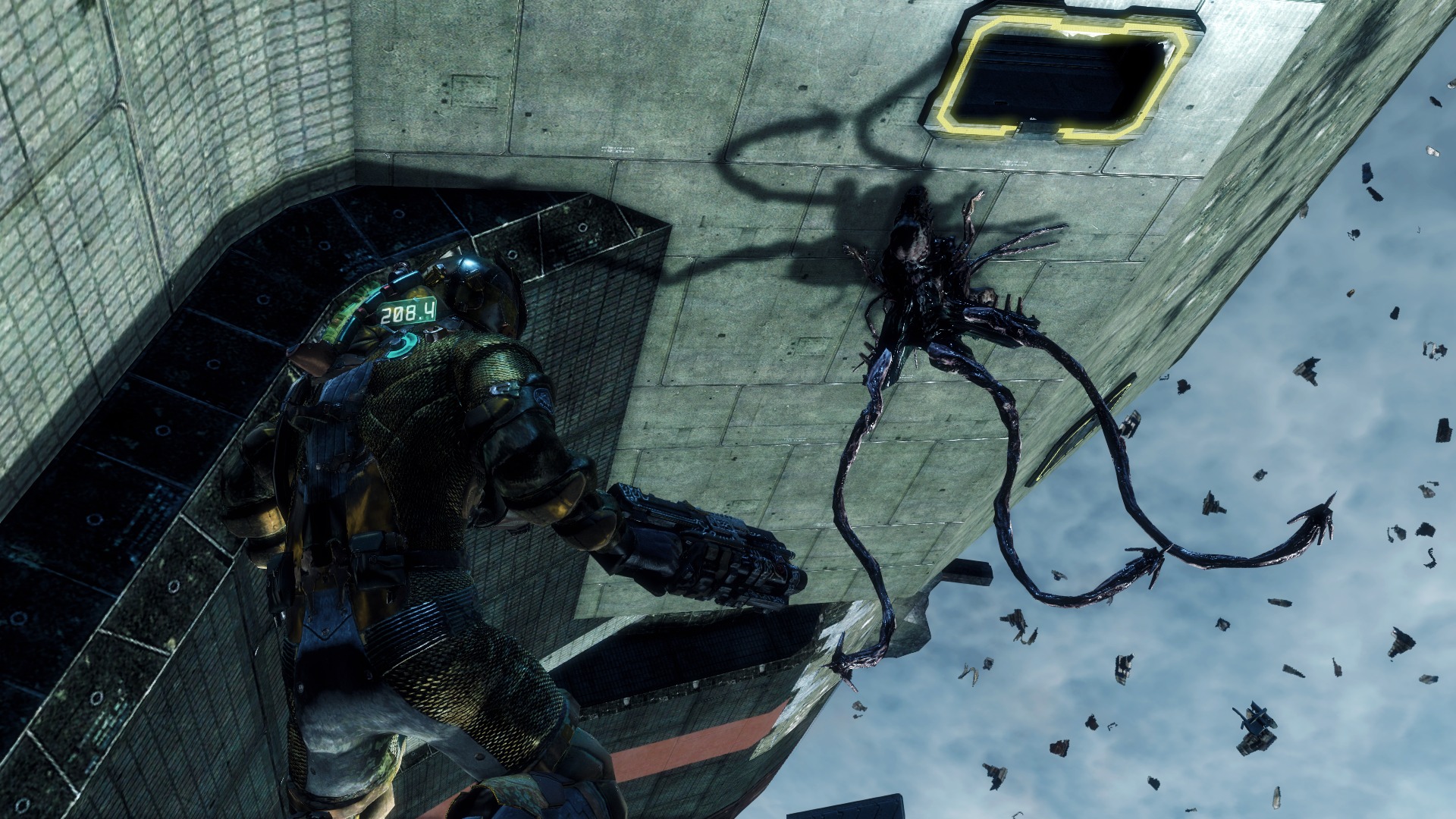
In Space, no one can tell you which way is up
The supply containers and Scavenger bots give you a spread of resources to purchase upgrades, ammo or health. You can trade items to recover resources but that might leave you short when you most need it. You can’t covert health packs into ammo. The monetary system in DS2 allowed that kind of flexibility. It’s best to hoard resources so you can purchase better weapons and upgrades when things get tough. The number and type of resources is rather superfluous, two or three would have been adequate. More RPG elements involving resources could have made them more worthwhile. The new resource system doesn’t add equivalent depth to the game world.
Weapon crafting does add more depth to the game. It gives players the chance to mix and match their ideal setup. Weapon designs are based on those from Dead Space 2. For example, the Tesla tool can produce a line gun and a military tool can produce an assault rifle. Each weapon has two tools, so players can join a flamethrower with a ripper blade. Each tool can be upgraded with a wide range of circuits or attachments. This is different from its predecessor’s linear, branching series of upgrades. You get a feel for how useful your weapons are. Are they slow to reload, lack damage or just need more ammo per clip? If you aren’t using your secondary tool, perhaps it’s time to change it. The player is rewarded for learning their own weaknesses and trying to minimize them. Weapon crafting is a natural improvement for the series, giving players more reason to replay.
In the first few hours, resources and weapons were rather limited on hard difficulty. It’s difficult to tell if the devilish microtransaction system had any impact, but it would be foolish to ignore the possibility. It’s more probable that resources were spent on health and ammo. Co-op is a good way to fill your inventory and sell off excess items for use in the single player. There are enough resources if you horde items, open every container and stomp every corpse. Initial game progress may be slower because the game is 30-50% longer than its predecessors. Despite the slow start, you’ll have plenty of resources to craft good weapons before the conclusion.
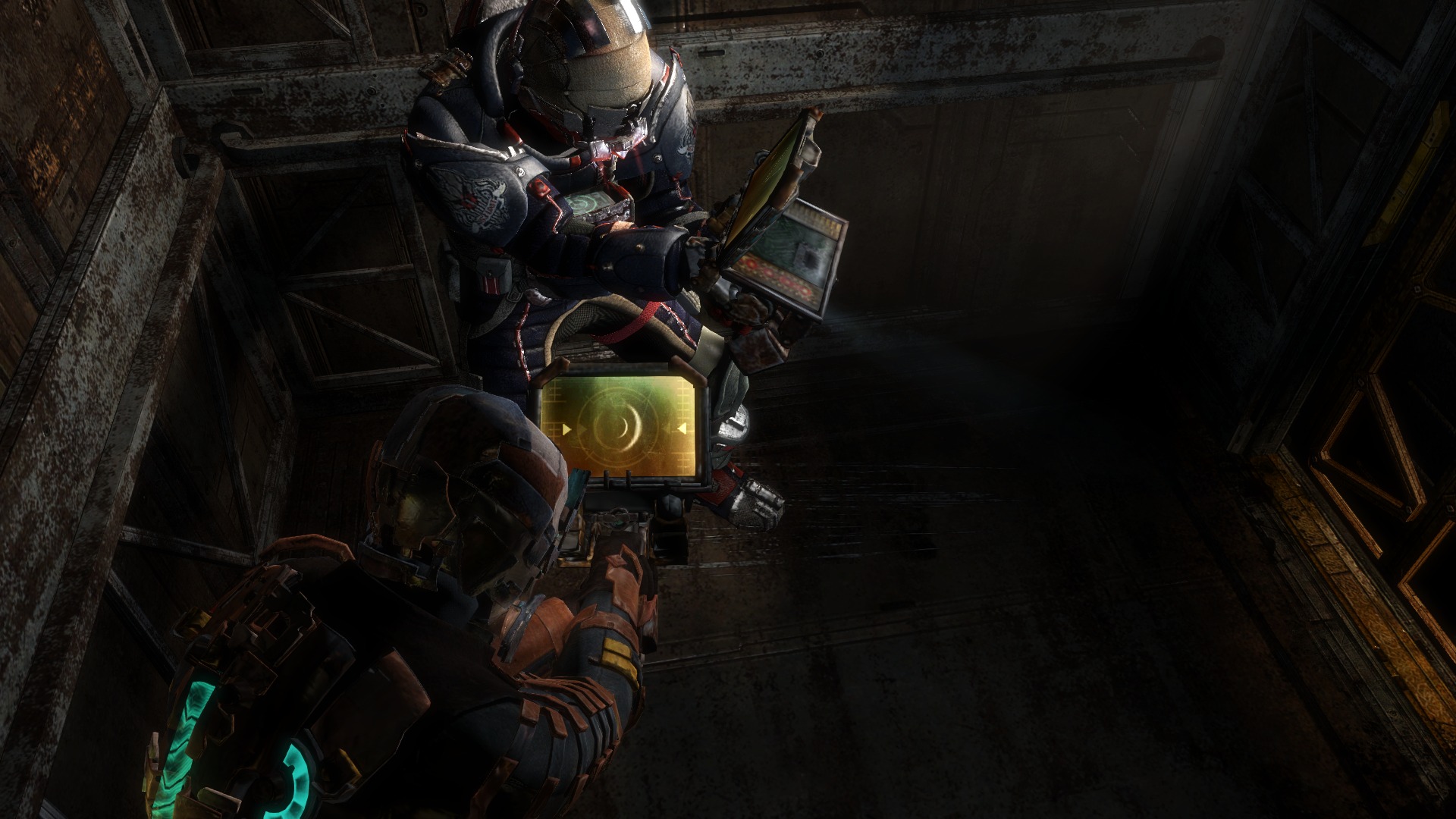
Two guys in an elevator, playing with their bots
Dead Space 3 has more action and a co-op mode to appeal to a wider audience. Unfortunately this hurts some of the elements that made the series great to begin with. It is still a faithful sequel. It just doesn’t quite nail the finer details in single player. Co-op is great when the action escalates during side missions. Carver’s hallucinations are a clever way to use the co-op mode. Simple space exploration liberates the franchise but it’s not around long enough. Weapon crafting is a clear improvement for the franchise and gives players something to experiment with. There are still some jump scares but most of the stress comes from high action sequences. Dead Space 3 is good sequel that implements co-op well but doesn’t quite match the single player experience of the first two games.
